Shawnee National Forest
- January 29, 2024
- 0 comment
Discover Shawnee National Forest; A unique blend of stunning landscapes, rich history, and diverse wildlife in southern Illinois. Covering an impressive 280,000 acres, this forest was established in 1939 and has since been a beacon of natural beauty and biodiversity. Characterized by its unique landscapes that range from rolling hills to rugged bluffs, Shawnee offers a diverse habitat for numerous species of plants and animals.
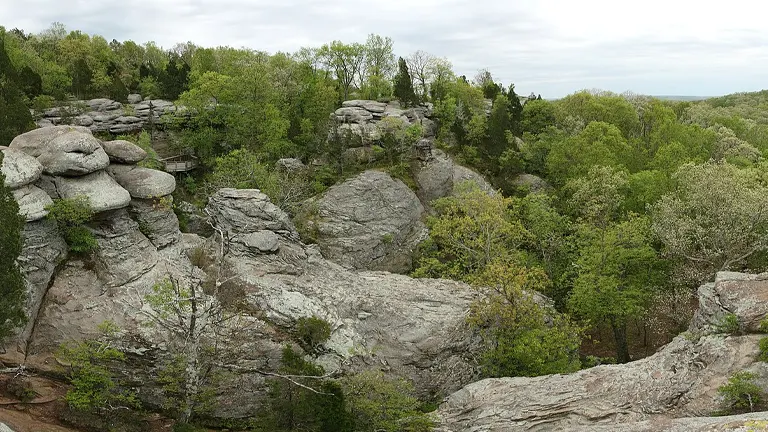
It’s not just a haven for nature enthusiasts but also a playground for outdoor activities like hiking, bird watching, and camping. Shawnee National Forest is not only important for recreation but also plays a vital role in wildlife conservation and ecological balance in the region.
Characterizing Features of Shawnee National Forest
- Diverse Landscapes: Shawnee National Forest is renowned for its diverse landscapes, ranging from oak-hickory forests to flourishing wetlands, and rugged canyons to unique geological formations. These varied landscapes are not only visually stunning but also contribute to the ecological richness of the region, supporting a wide array of plant and animal life.
- Strategic Location: Strategically nestled between the Ohio and Mississippi rivers in Southern Illinois, Shawnee National Forest’s location is pivotal. This positioning contributes to its diverse ecosystems and also makes it a crucial habitat for migratory species, enhancing its ecological importance.
- Recreational Hub: The forest serves as a significant recreational hub, offering miles of trails for hiking, bicycling, and equestrian use. Its water bodies accommodate activities like kayaking and canoeing. Furthermore, the provision for both established and dispersed camping caters to a range of outdoor enthusiasts.
- Ecological Convergence: A rare convergence of six natural ecological regions occurs within Shawnee National Forest. This unique feature results in a rich biodiversity, making it a haven for a variety of plant and animal species, some of which are rare or endangered.
- Geological Significance: Shawnee National Forest is home to fascinating geological features, including the Little Grand Canyon and Cedar Lake. These features are not just scenic wonders but are also significant in terms of geological history, offering insights into past climatic and environmental conditions.
- Conservation Efforts: The forest has a rich history of conservation, including significant efforts in the 1930s and 1940s by the Civilian Conservation Corps. Recent efforts focus on biodiversity preservation and sustainable management, reflecting its ongoing commitment to environmental stewardship.
- Cultural and Historical Sites: Beyond its natural beauty, Shawnee National Forest is dotted with cultural and historical sites, such as the Cave in Rock, which offer a glimpse into the region’s past. These sites add a unique cultural dimension to the forest, enhancing its appeal to a wide range of visitors.
- Accessibility and Visitor Appeal: With nearly 1 million visitors annually, the forest is easily accessible and appeals to a wide demographic. Its proximity to major urban centers and the variety of experiences it offers make it a favored destination for both nature lovers and adventure seekers.
History of Shawnee National Forest
Shawnee National Forest, spanning across Southern Illinois and covering approximately 289,000 acres, was officially established in September 1939 under the leadership of President Franklin D. Roosevelt. This marked a significant milestone in American environmental conservation. The forest’s early history is characterized by a transformation from overused farmland to a diverse and vibrant ecosystem. This change was largely driven by the efforts of the Civilian Conservation Corps (CCC) during the 1930s and 1940s. The CCC undertook extensive reforestation and soil rebuilding projects, planting numerous pine trees to combat erosion, which played a crucial role in restoring the ecological balance of the area.
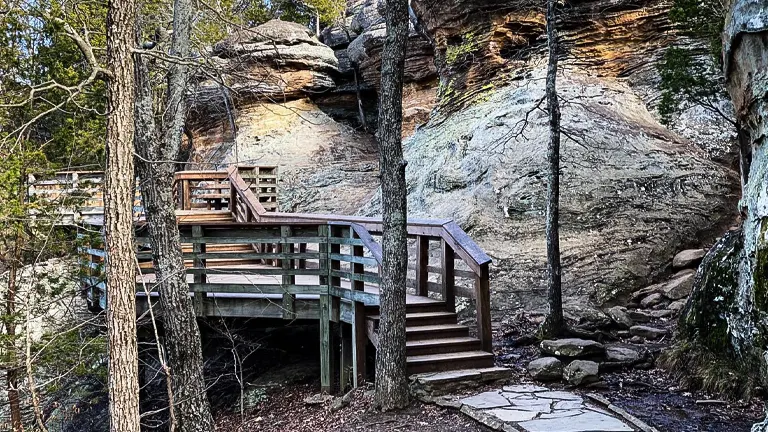
The latter part of the 20th century saw Shawnee National Forest become a focal point for environmental activism, with involvement from a range of organizations from Earth First! to the Sierra Club and the Green Party. These groups influenced the development of conservation policies and practices within the forest. In 2006, the Forest Service completed a comprehensive Forest Management Plan, updated every 10–15 years, to guide the sustainable management of Shawnee. This plan, created through collaborative efforts with environmental groups and the public, aims to preserve the forest’s unique biodiversity, balancing ecological health with recreational use. Today, Shawnee National Forest stands as a symbol of successful ecological restoration and a testament to the ongoing commitment to preserving one of Illinois’ most treasured natural landscapes.
Unique Ecosystem of Shawnee National Forest
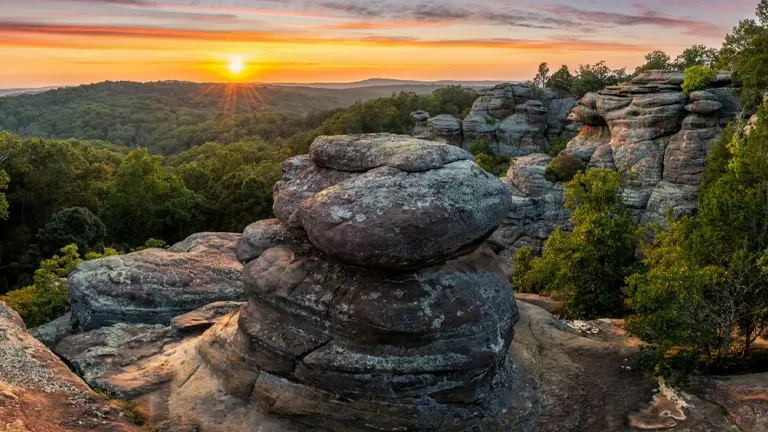
Shawnee National Forest, a remarkable ecological treasure, is distinguished by its unique convergence of six natural ecological regions, creating an extraordinarily diverse habitat in Southern Illinois. This rare amalgamation results in a rich tapestry of biodiversity, hosting an array of distinct flora and fauna. The forest’s ecosystem encompasses a blend of lush oak-hickory forests, vibrant wetlands, and deep canyons, providing a haven for numerous plant and animal species, some of which are rare or endemic to the region. This ecological diversity not only underscores the forest’s importance as a natural sanctuary but also contributes to its role as a vital research and educational resource, offering insights into ecological interactions and conservation.
Unique Location of Shawnee National Forest
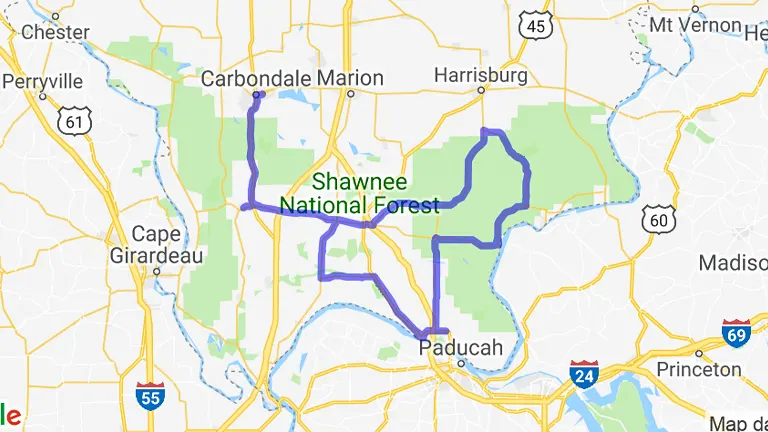
Shawnee National Forest’s location is distinct, positioned in the Ozark and Shawnee Hills of Southern Illinois. This strategic positioning within the Ozark and Shawnee Hills contributes to its distinct topographical features, ranging from rugged bluffs to serene wetlands and lush forests. The forest’s location, at the intersection of various ecological regions, results in a rich confluence of wildlife and plant species, some of which are unique to the area. Additionally, Shawnee National Forest’s proximity to urban centers makes it an accessible retreat for nearly a million visitors annually, offering a blend of natural wonder, recreational opportunities, and a peaceful escape from city life. Its location, deeply rooted in both the cultural fabric and natural heritage of Southern Illinois, underscores its significance as a cherished natural landmark and a crucial bastion of biodiversity.
The Importance of Conservation and Recreation in Shawnee National Forest

The dual roles of conservation and recreation in Shawnee National Forest are critical to its enduring appeal and ecological significance. As a vital green space, the forest plays a key role in preserving biodiversity, acting as a sanctuary for numerous species of plants and animals, some of which are unique to this ecological crossroads of Southern Illinois. Conservation efforts within Shawnee are essential in maintaining the delicate balance of its diverse ecosystems, ensuring that its natural beauty and ecological integrity are sustained for future generations. Simultaneously, the forest serves as a recreational haven, offering an array of outdoor activities like hiking, camping, bird watching, and rock climbing, which not only provide enjoyment and health benefits to nearly a million annual visitors but also foster a deeper appreciation and understanding of the natural world. This synergy between conservation and recreation underscores Shawnee National Forest’s role not just as a recreational area, but as an invaluable resource for environmental education, ecological research, and a testament to the benefits of preserving natural spaces within our communities.
Diverse Vegetation and Plant Species in Shawnee National Forest
- Oak Species (Quercus): Oaks are dominant in Shawnee’s oak-hickory forests. Species like White Oak (Quercus alba) and Black Oak (Quercus velutina) are common, providing essential habitat and food sources for wildlife.
- Hickory Trees (Carya): Complementing the oaks, hickory trees like the Shagbark Hickory (Carya ovata) and Pignut Hickory (Carya glabra) are prevalent, contributing to the forest’s biodiversity and serving as vital resources for various animal species.
- Wildflowers: The forest floor is adorned with a variety of wildflowers such as the Pink Lady’s Slipper (Cypripedium acaule) and the Trillium (Trillium), which add color and attract pollinators during spring and summer.
- Ferns and Understory Plants: Ferns like the Maidenhair Fern (Adiantum pedatum) and understory plants such as the Wild Ginger (Asarum canadense) thrive in the forest’s damp, shaded areas, enriching the undergrowth diversity.
- Aquatic Plants: In wetland areas, aquatic plants like the Duckweed (Lemna) and Cattail (Typha) play crucial roles in maintaining water quality and providing habitats for aquatic wildlife.
- Pine Trees (Pinus): Planted extensively by the CCC in the 1930s and 1940s, pine trees such as Shortleaf Pine (Pinus echinata) have become part of the forest’s landscape, aiding in soil stabilization and erosion control.
- Rare and Endemic Plants: Shawnee National Forest is also home to rare and endemic plant species like the Illinois Bundleflower (Desmanthus illinoensis), which are critical to the forest’s unique ecological identity.
- Grasses and Shrubs: Native grasses like Little Bluestem (Schizachyrium scoparium) and shrubs such as the Flowering Dogwood (Cornus florida) are integral to the forest’s ecosystem, providing food and shelter for wildlife.
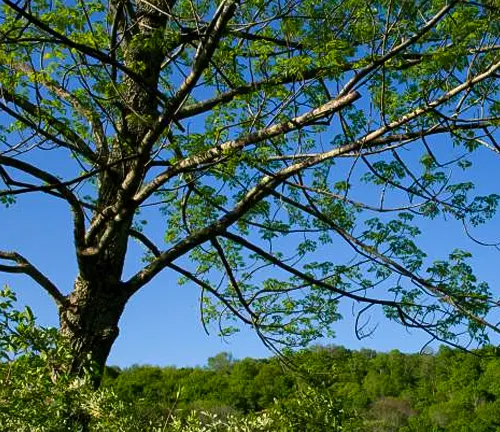
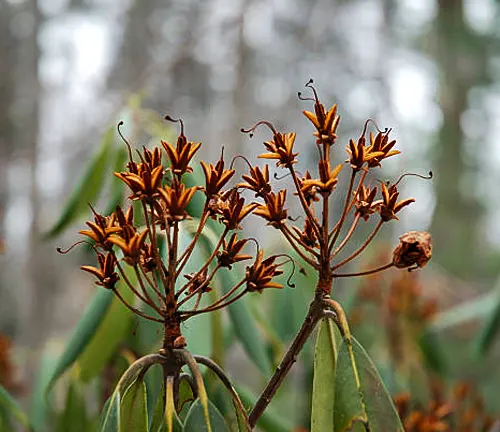
Fauna in Shawnee National Forest
- White-tailed Deer (Odocoileus virginianus): A common sight, these deer are integral to the ecosystem, playing a role in seed dispersal and serving as prey for predators, maintaining a balanced environment.
- Bobcat (Lynx rufus): Bobcats, elusive and solitary predators, are vital for controlling rodent and small mammal populations, contributing to the ecological balance.
- Barred Owl (Strix varia): These nocturnal birds are key predators of small mammals and insects. Their distinctive hooting is a familiar sound in the forest’s night ambiance.
- Red-tailed Hawk (Buteo jamaicensis): As apex predators, these hawks play a crucial role in controlling rodent populations and maintaining the ecological equilibrium.
- Eastern Box Turtle (Terrapene carolina carolina): A species often found in the forest’s underbrush, these turtles are important for seed dispersal and indicate a healthy ecosystem.
- American Bullfrog (Lithobates catesbeianus): Found in the forest’s wetlands, these frogs are both predators and prey, serving as a key species in the aquatic food web.
- Raccoon (Procyon lotor): Omnivorous and adaptable, raccoons are essential for their role in seed dispersal and as a food source for larger predators.
- Various Species of Bats: Bats in the forest, such as the Little Brown Bat (Myotis lucifugus), play a crucial role in insect population control and are indicators of a healthy ecosystem.
- Pileated Woodpecker (Dryocopus pileatus): These large woodpeckers are vital for controlling insect populations and creating nesting cavities used by various bird and mammal species.
- Monarch Butterfly (Danaus plexippus): Known for their migratory patterns, these butterflies are important pollinators, contributing to the health of the forest’s flowering plants.
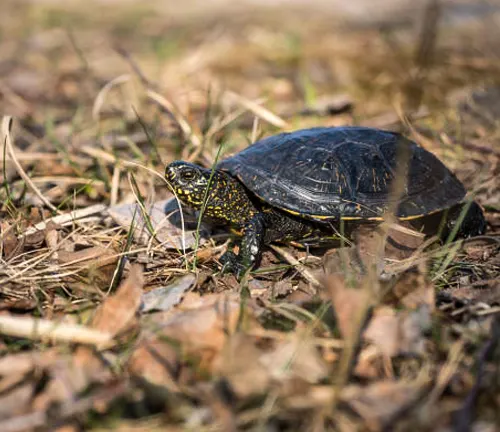
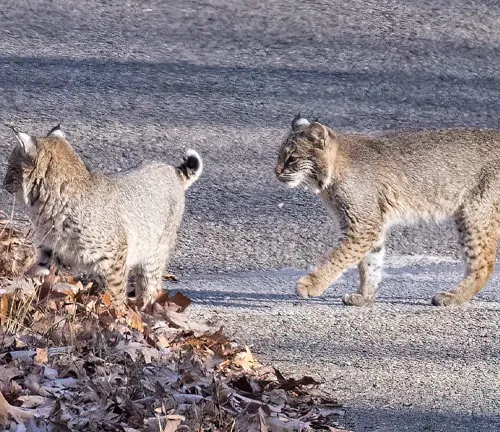
Attractions in Shawnee National Forest
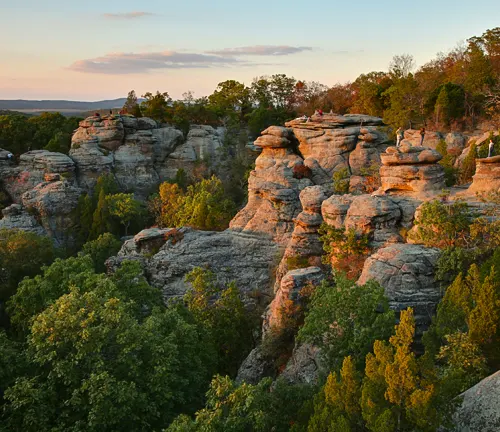
Garden of the Gods: The Garden of the Gods is an iconic attraction within Shawnee National Forest, known for its breathtaking rock formations and scenic overlooks. The Observation Trail here offers a stunning view of the unique sandstone rock formations, some dating back more than 300 million years. It’s a perfect spot for photography, hiking, and experiencing the sunset, providing visitors a glimpse into the geological history of the area.
Cave in Rock State Park: This state park is famous for its large cave that overlooks the Ohio River. Historically used by river pirates, Cave in Rock adds a sense of adventure and history to the forest experience. The park also offers picnic areas and hiking trails, making it a great family destination to explore the natural and historical wonders of the region.
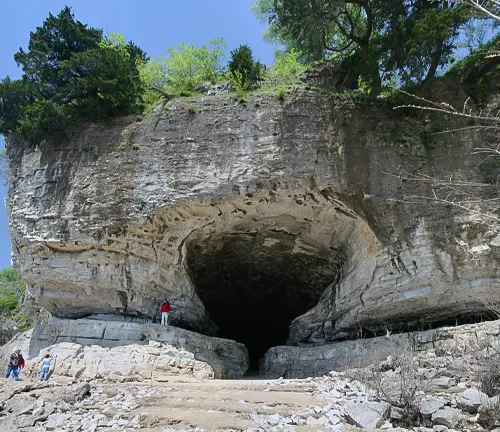
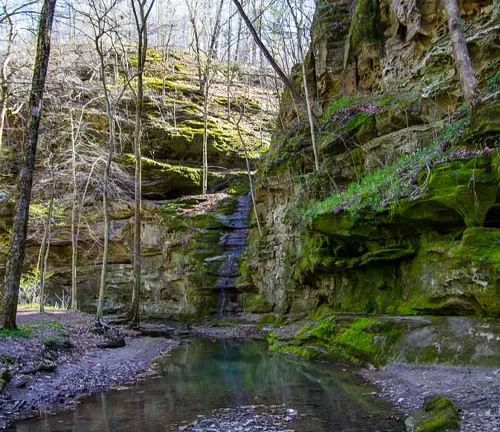
Little Grand Canyon: The Little Grand Canyon offers a challenging hike leading to some of the most spectacular views in the forest. The trail descends into a canyon with rock walls and small waterfalls, showcasing the area’s unique topography and erosion patterns. It’s a must-visit for those who enjoy a more rugged outdoor experience.
Heron Pond: Known for its diverse wildlife and unique ecosystem, Heron Pond features a floating boardwalk that takes visitors through a beautiful wetland area. It’s a prime spot for bird watching and observing a variety of plant and animal life, making it an essential visit for nature enthusiasts.

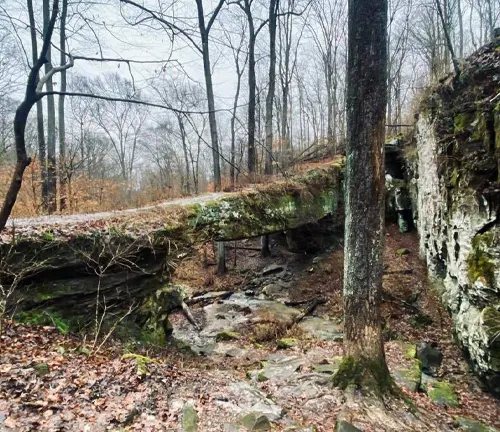
Pomona Natural Bridge: This natural sandstone bridge spans 90 feet and is a testament to the erosional powers of water and time. The Pomona Natural Bridge is easily accessible via a short trail and offers visitors a chance to see one of nature’s architectural wonders, surrounded by lush foliage and serene beauty.
Rim Rock National Recreation Trail: Offering both upper and lower trails, Rim Rock takes visitors through a diverse landscape of rock formations, scenic overlooks, and dense forests. The trail’s upper part provides an easy walk with stunning views, while the lower part descends into a more rugged terrain, offering a glimpse into the forest’s rich biodiversity.
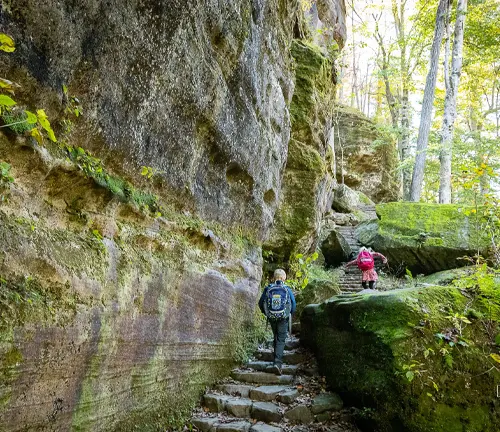
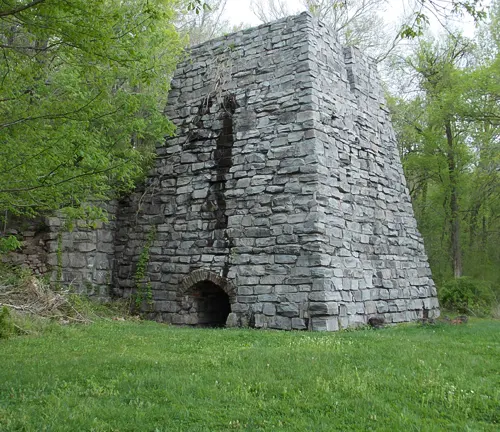
Iron Furnace: The historic Iron Furnace, dating back to the Civil War era, is a remnant of the region’s industrial past. This site not only provides a historical perspective of the area but also offers picnic facilities and hiking trails, blending education with recreation.
Jackson Falls: Jackson Falls is popular among rock climbers and hikers, known for its beautiful waterfalls and rugged cliffs. The area provides a perfect blend of adventure and natural beauty, suitable for both experienced climbers and those looking to enjoy a peaceful hike amidst stunning scenery.
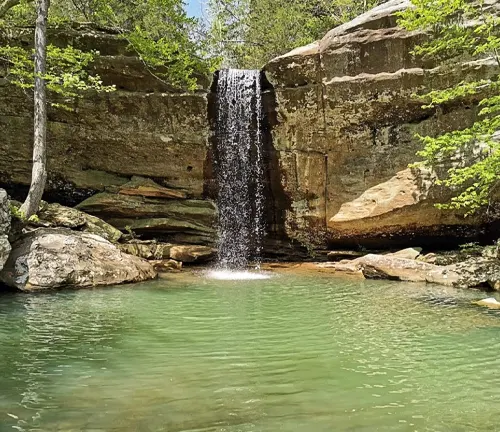
Recreational Activities in Shawnee National Forest
- Hiking: Shawnee National Forest offers a plethora of hiking trails suitable for all skill levels, from easy, scenic walks to challenging hikes. Trails like the River to River Trail and the Garden of the Gods Observation Trail provide hikers with stunning views of rock formations, lush forests, and diverse wildlife. These trails are not just pathways for physical exercise but also gateways to experiencing the forest’s natural beauty and tranquility.
- Rock Climbing: For adventure enthusiasts, Shawnee National Forest is a prime destination for rock climbing, especially at areas like Jackson Falls. With its sandstone cliffs and varied routes, the area caters to both beginners and experienced climbers. This activity offers a unique way to engage with the forest’s rugged terrain, providing both physical challenges and rewarding views.
- Horseback Riding: Horseback riding is another popular activity, with several trails designated for equestrian use. Riding through the forest offers a different perspective and a gentle way to explore its vast landscapes. Equestrian trails like the River to River Trail provide riders with a serene experience, winding through various terrains and offering a peaceful communion with nature.
- Bird Watching: The forest’s diverse ecosystems make it an ideal spot for bird watching. Enthusiasts can spot a variety of bird species, including the Pileated Woodpecker and Barred Owl. This activity not only provides relaxation and enjoyment but also opportunities for educational experiences in understanding the region’s avian life.
- Camping: Shawnee National Forest offers diverse camping experiences, from developed campgrounds with amenities to primitive, backcountry sites for a more rugged experience. Camping in Shawnee allows visitors to fully immerse themselves in the natural surroundings, whether it’s a family trip or a solo adventure.
- Canoeing and Kayaking: The forest’s rivers and lakes provide perfect settings for canoeing and kayaking. These water-based activities offer a tranquil experience, allowing visitors to explore the aquatic ecosystems and enjoy the serene beauty of the forest from a different vantage point.
- Fishing: Fishing enthusiasts can enjoy angling in the various streams and lakes within the forest. The waters are home to species like bass and catfish, offering both a peaceful pastime and the excitement of the catch, all while being surrounded by the forest’s natural beauty.
- Photography and Nature Observation: For those who love photography or simply wish to observe nature, Shawnee National Forest provides endless opportunities. The diverse landscapes, wildlife, and changing seasons offer countless subjects for photographers and nature lovers, making it a haven for capturing the beauty of the natural world.
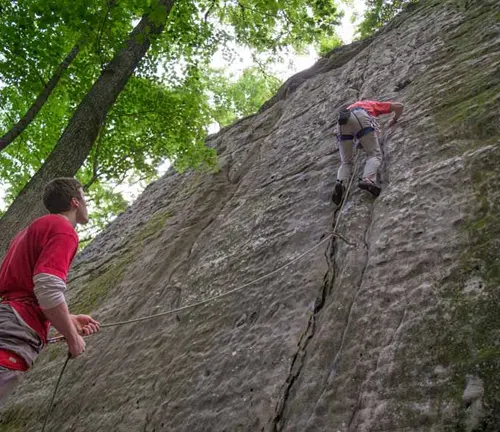
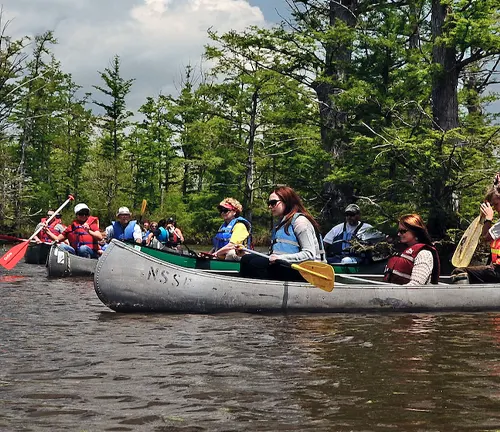
Different Facilities and Amenities in Shawnee National Forest
- Developed Campgrounds: Shawnee National Forest offers several developed campgrounds, such as the Garden of the Gods Campground, equipped with facilities like picnic tables, fire rings, and restrooms. These campgrounds are ideal for families and those looking for a comfortable camping experience with basic amenities. They provide a perfect base for exploring the nearby trails and natural attractions while ensuring a comfortable stay in the heart of nature.
- Backcountry Camping Areas: For those seeking a more rugged and immersive outdoor experience, the forest provides designated backcountry camping areas. These sites allow for a deeper connection with the wilderness, ideal for experienced campers and backpackers. While these areas are more primitive, without the typical amenities of developed campgrounds, they offer a sense of solitude and a chance to truly disconnect and immerse in nature.
- Visitor Centers: The forest’s visitor centers, such as the one in Harrisburg, serve as key points for gathering information, maps, and advice about exploring Shawnee National Forest. Staffed by knowledgeable personnel, these centers provide valuable resources on hiking trails, wildlife, camping regulations, and current conditions, ensuring visitors are well-prepared for their forest adventures.
- Hiking Trailheads with Parking: The forest boasts well-maintained trailheads for its numerous hiking trails, complete with parking areas. These trailheads, like the one at Little Grand Canyon, are crucial for providing easy access to the forest’s diverse hiking paths. They often include informational boards with maps and safety guidelines, making them convenient starting points for exploring the forest’s natural beauty.
- Picnic Areas: Scattered throughout Shawnee National Forest are numerous picnic areas, offering scenic spots with facilities like picnic tables and grills. These areas, such as the ones near Garden of the Gods, are perfect for family gatherings, group outings, or a peaceful meal surrounded by nature. They provide a comfortable and relaxing way to enjoy the forest’s serene environment.
- Educational and Interpretive Sites: The forest is home to educational sites, such as the Iron Furnace historical site, that offer interpretive displays and information about the region’s cultural and natural history. These sites are instrumental in enhancing the visitor experience through learning, making trips both enjoyable and informative.
- Equestrian Campgrounds and Trails: Equestrian enthusiasts can find specialized facilities like equestrian campgrounds and horse-friendly trails. These amenities cater to visitors who wish to explore the forest on horseback, providing appropriate accommodations for both riders and their horses, and ensuring a unique and enjoyable equestrian experience in the forest.
- Water Access Points: For visitors interested in water activities like fishing, canoeing, or kayaking, the forest provides several water access points at lakes and rivers. These access points, equipped with boat ramps or docks, allow for easy entry into the water, making them ideal spots for enjoying the forest’s aquatic environments.
Tips and Advice for Visiting Shawnee National Forest
- Plan Ahead for the Season: Shawnee National Forest offers different experiences across seasons. Spring and fall are ideal for comfortable hiking conditions and vibrant foliage, while summer provides lush greenery but can be quite hot. Winter offers a stark beauty, but trails may be challenging to navigate. Check the weather forecast and prepare accordingly, with appropriate clothing and gear for the season.
- Stay on Designated Trails: For your safety and to preserve the natural environment, it’s important to stay on designated trails. This not only helps prevent getting lost but also protects the habitats of the plants and animals in the forest. Trail maps are available at visitor centers and often at trailhead kiosks.
- Respect Wildlife: Shawnee National Forest is home to a diverse range of wildlife. Maintain a safe distance from animals and avoid feeding them, as human food can harm their health and alter natural behaviors. Quiet observation is key to a respectful and safe wildlife experience.
- Leave No Trace Principles: Follow Leave No Trace principles to minimize your impact on the environment. This includes packing out all trash, keeping fires in designated areas, and avoiding picking plants or disturbing wildlife. Preserving the forest’s natural beauty ensures it remains pristine for future visitors.
- Stay Hydrated and Energized: Bring plenty of water, especially during summer hikes, as dehydration can be a serious risk. Snacks or energy-rich foods are also advisable for longer trails to maintain your energy levels. Remember, services in remote areas of the forest may be limited.
- Wear Proper Footwear: Durable, comfortable footwear is essential for a safe and enjoyable hiking experience. The terrain in Shawnee National Forest can vary from smooth paths to rugged, rocky trails. Good hiking shoes or boots provide necessary support and grip.
- Check for Ticks and Insects: In a natural setting like Shawnee National Forest, insects, including ticks, are common. Use insect repellent and check for ticks after your visit, especially if you’ve been in grassy or wooded areas.
- Inform Someone of Your Plans: Always let someone know your itinerary and expected return time, especially if you’re venturing into less-traveled areas. In case of an emergency, this information can be crucial for search and rescue efforts.
Recommendation
Discover the wonders of Shawnee National Forest, a hidden gem in Southern Illinois. With its breathtaking landscapes, from the majestic Garden of the Gods to the tranquil Heron Pond, this forest is perfect for adventurers and nature lovers alike. Whether you’re hiking, bird-watching, or simply seeking a peaceful escape, Shawnee offers an unforgettable experience. Don’t miss the chance to explore this beautiful natural sanctuary – it’s an adventure that promises to be both rejuvenating and inspiring.
Conclusion
In conclusion, Shawnee National Forest is a remarkable destination where nature’s majesty is vividly on display. It’s a place where adventure intertwines with tranquility, offering something for everyone who seeks the solace and excitement of the great outdoors. This forest is not just a location, but a vibrant experience that stays with you long after your visit.
FAQs
- What makes Shawnee National Forest unique compared to other national forests?
Shawnee National Forest stands out due to its location at the convergence of six ecological regions, resulting in a rich biodiversity and unique geological features like the Little Grand Canyon and Cedar Lake. Its history of conservation efforts and its significant role in Illinois’ natural landscape also add to its uniqueness. - Can I experience any historical sites within Shawnee National Forest?
Yes, Shawnee National Forest is home to several historical sites. One notable site is the Cave in Rock, which offers a glimpse into the region’s past, including early settler history and tales of river pirates. - Are there specific best times of the year to visit for wildlife viewing?
For wildlife viewing, the best times to visit are during the spring and fall. These seasons provide opportunities to see migratory birds and local fauna in more temperate weather conditions. - What types of camping experiences are available in Shawnee National Forest?
The forest offers a variety of camping experiences, including established campgrounds with amenities and dispersed camping for those seeking a more rugged experience. Each type provides a different way to immerse yourself in the natural beauty of Shawnee. - Is Shawnee National Forest suitable for family trips?
Absolutely! Shawnee National Forest offers a wide range of family-friendly activities, from hiking and picnicking to educational programs and easy-access scenic spots. There’s something for every age group to enjoy. - What should I know about hiking in the forest?
Shawnee National Forest has trails of varying difficulty levels. It’s important to wear appropriate footwear, carry enough water, and stay on marked trails for safety. Checking trail conditions in advance and respecting wildlife habitats is also recommended. - Can I participate in water activities in the forest?
Yes, Shawnee National Forest offers several water-based activities like kayaking, canoeing, and fishing in its lakes and rivers. Always follow safety guidelines and local regulations while enjoying these activities. - Are there guided tours available in Shawnee National Forest?
Guided tours are available, particularly focusing on the forest’s ecology, history, and conservation. These tours provide in-depth knowledge and are a great way to learn more about the forest from experts.
In the embrace of Southern Illinois lies Shawnee National Forest, a sanctuary of natural splendor and history. It beckons to be explored and cherished, offering a slice of wilderness that stays with you long after your visit.


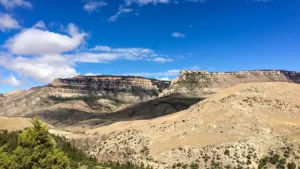
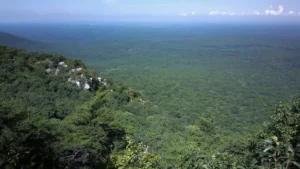
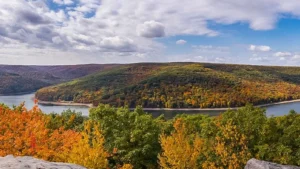
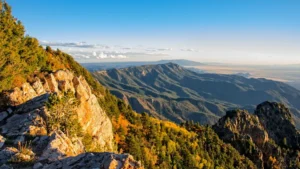
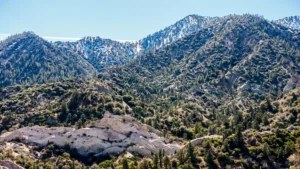
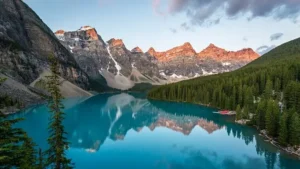

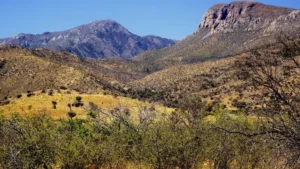
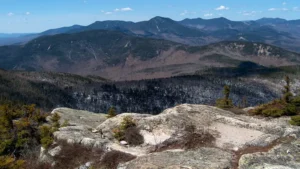
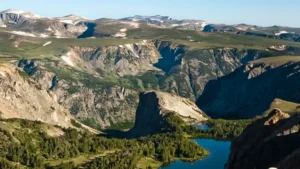
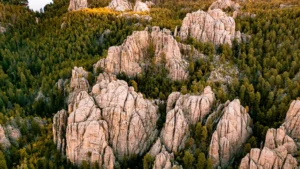
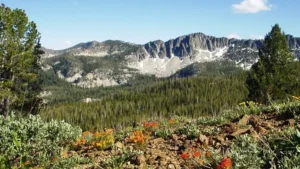
Leave your comment